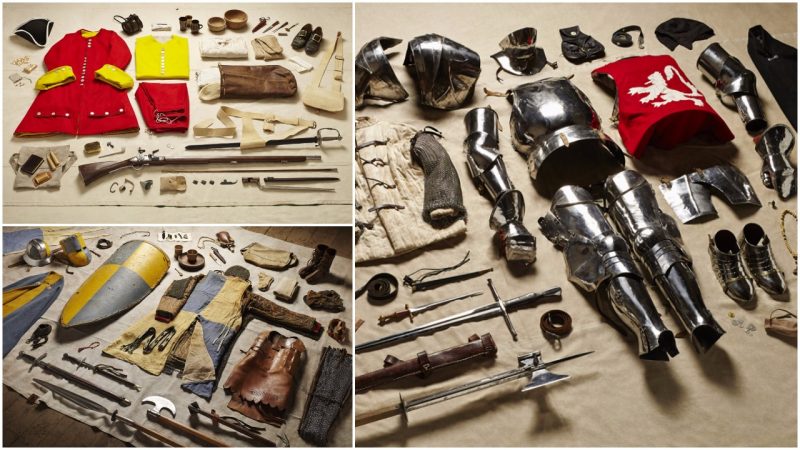Every century has its battle, and battles from different eras have been fought with various weapons. It’s amazing to see how the soldiers’ inventory has evolved over the years.
For instance, the soldiers of the 13th century were heading to battle equipped with a Kettle helmet and battle ax, the troops in the 16th century were using swords and daggers, and throughout World War I hand grenades were a regular part of every British soldier’s kit.
The Battle of Hastings in 1066.
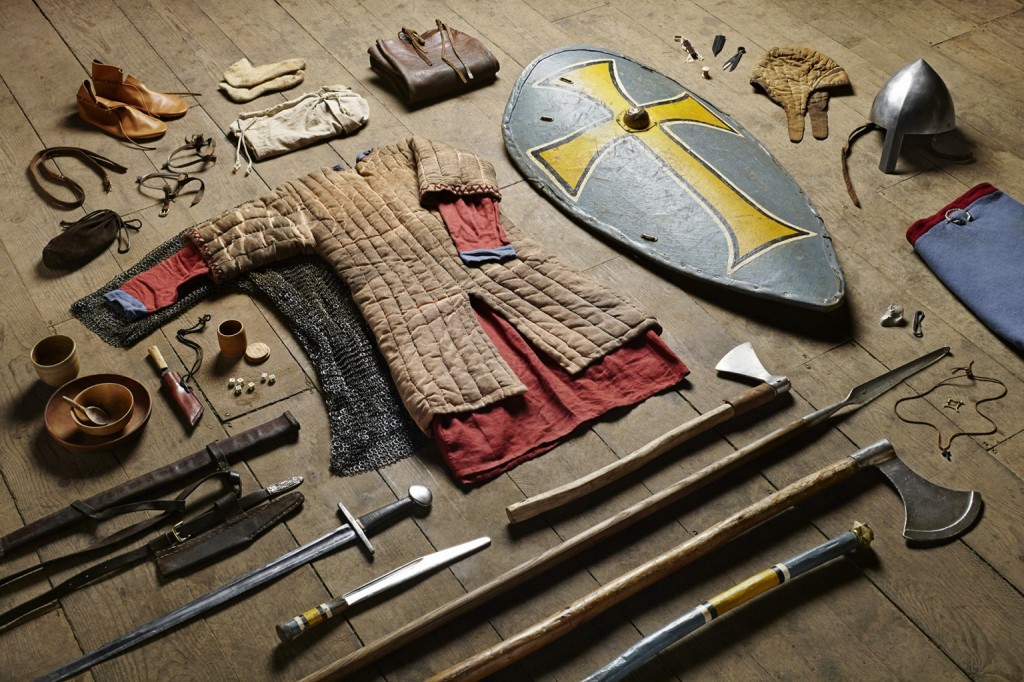
1244 Mounted Knight, Siege of Jerusalem
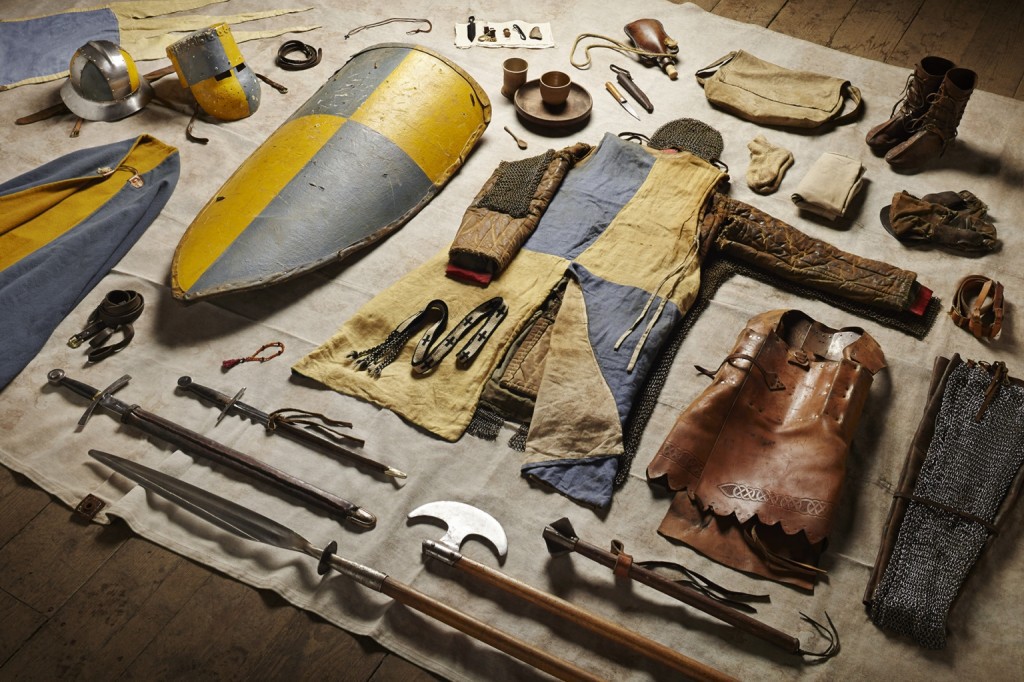
Battle of Agincourt in 1415
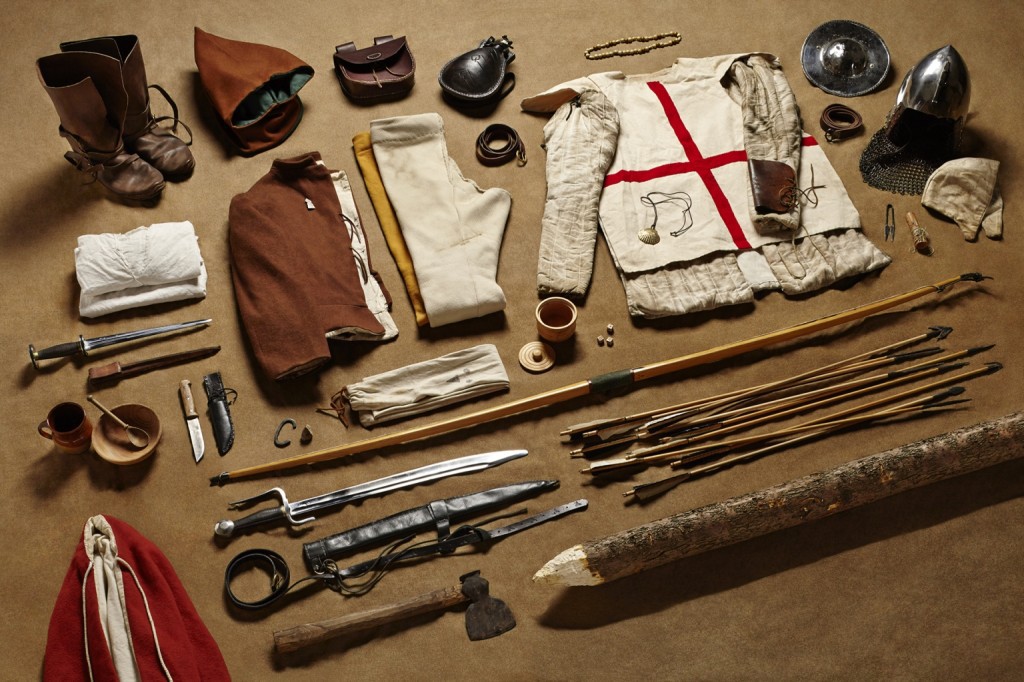
Kit for a soldier in the Battle of Bosworth 1485
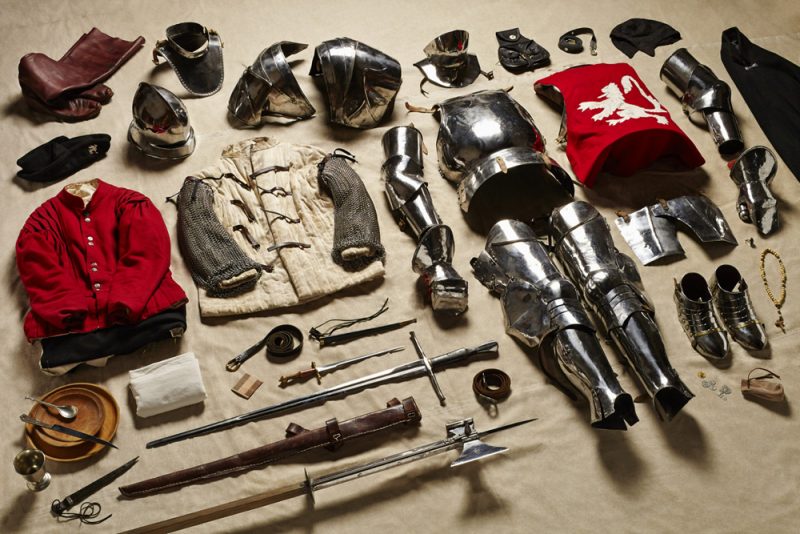
Thom Atkinson, a UK-based photographer, documents the equipment of British soldiers over the course of 1,000 years. His series, entitled “Soldiers’ Inventories” captures the battle kits from The Battle of Hastings through the Battle of Agincourt in 1415 to the Falkland’s Conflict in 1982.
“Britain spends a lot of its time, fighting people,” Atkinson stated.
This is a kit from 1588 and is the first in the series that includes a gun.
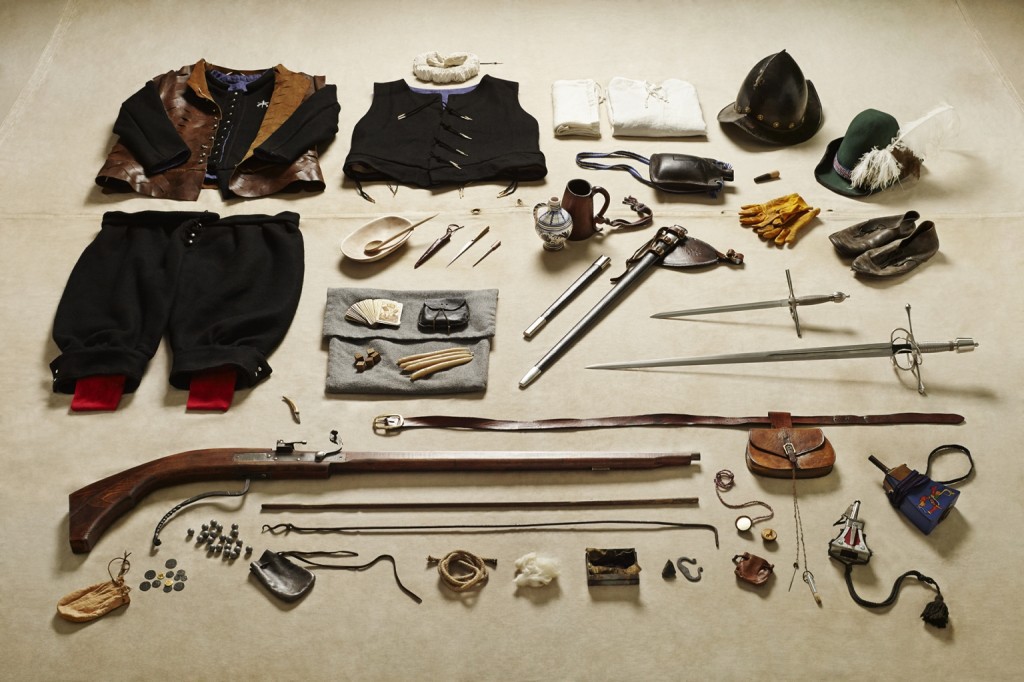
1645 New Model Army musketeer, Battle of Naseby
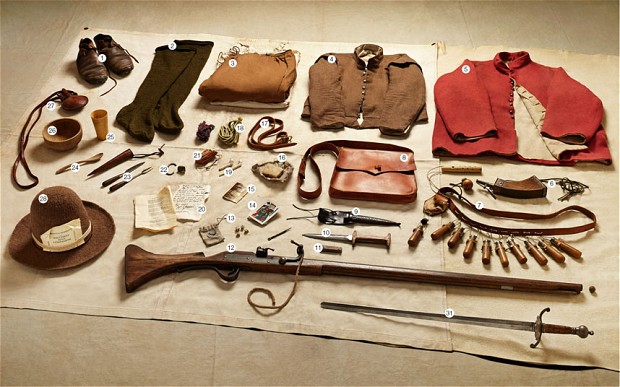
Private Sentinel, Battle of Malplaquet, 1709
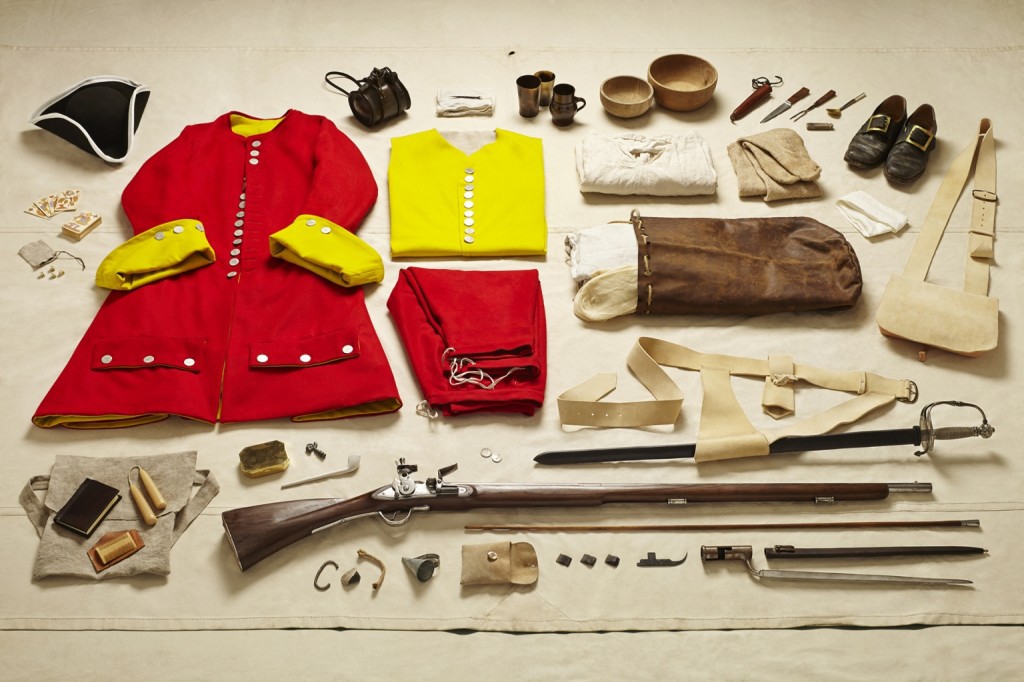
The kit for the Battle of Waterloo in 1815.
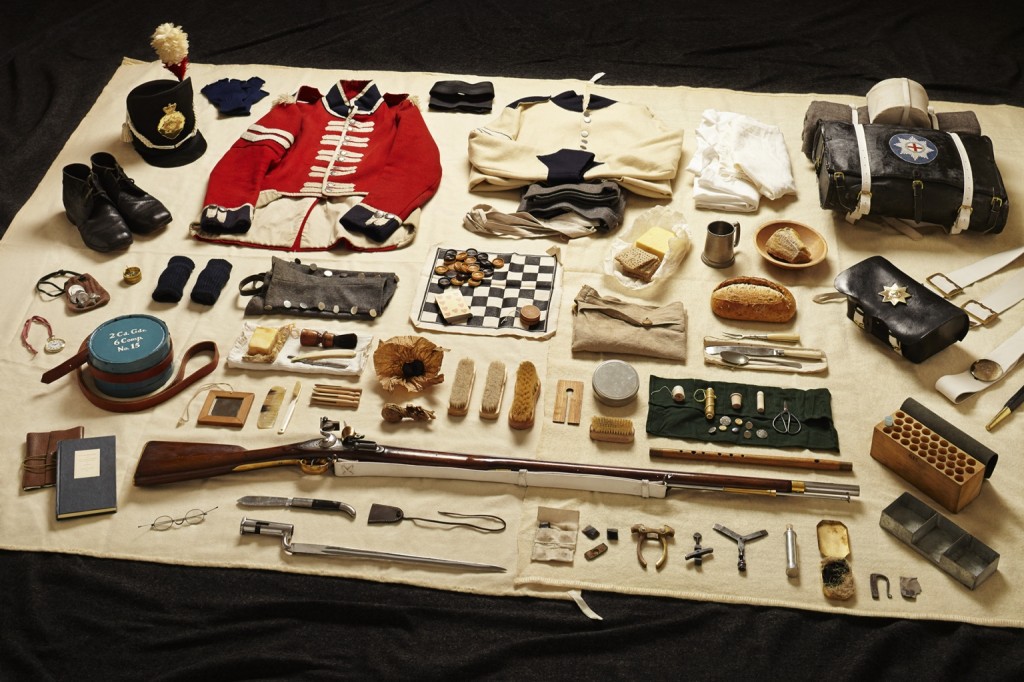
During the 1854 Battle Of Alma
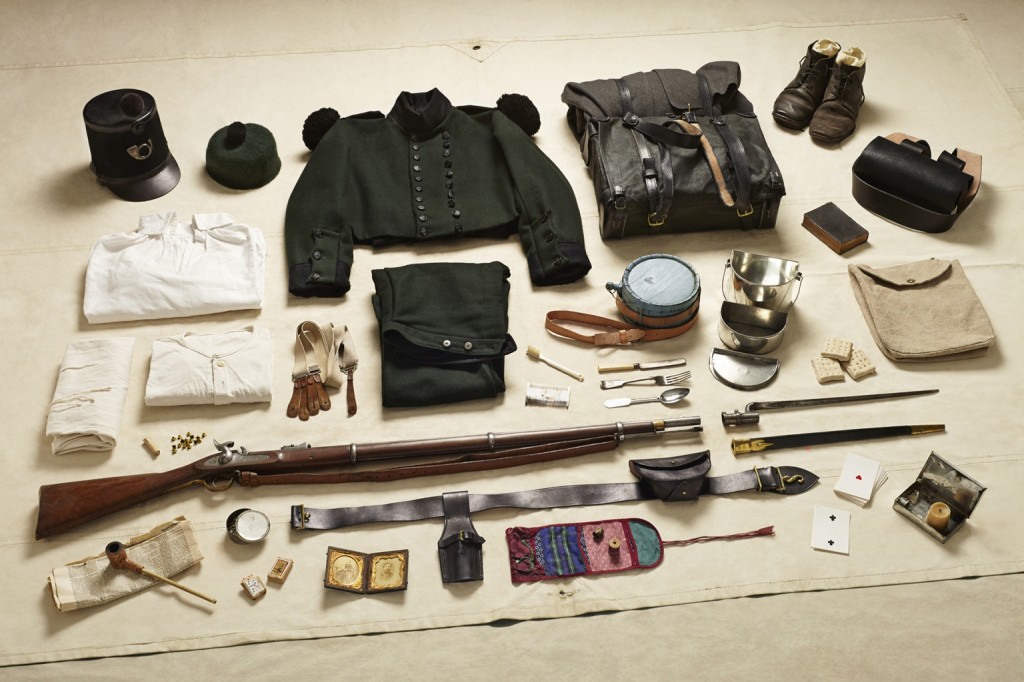
The neatly organized gear, besides weapons, also included things like cards and checkerboards, which provide a glimpse of how the soldiers killed the boredom and monotony during a war. To gather the gear, the photographer visited living history communities, whose members collect it for such things as war reenactments.
The 9-month-long project was an educational experience for Atkinson: “I’ve never been a soldier. It’s difficult to look in on a subject like this and completely understand it. I wanted it to be about people. Watching everything unfold, I begin to feel that we are the same creatures with the same fundamental needs.”
Battle of the Somme 1916.
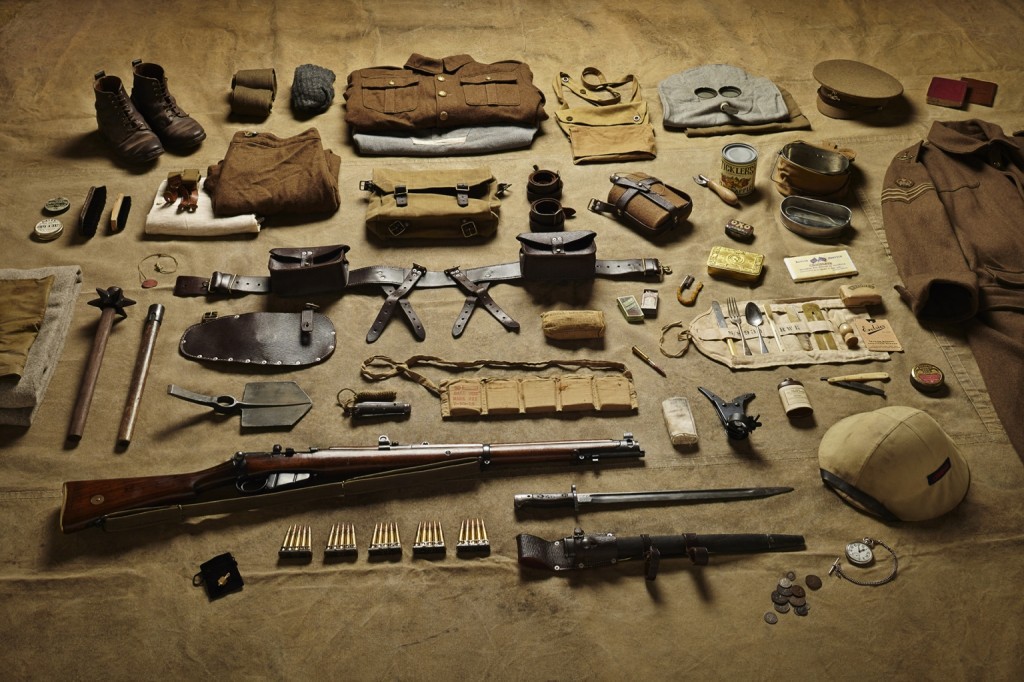
Lance Corporal, Parachute Brigade, Battle of Arnhem, 1944
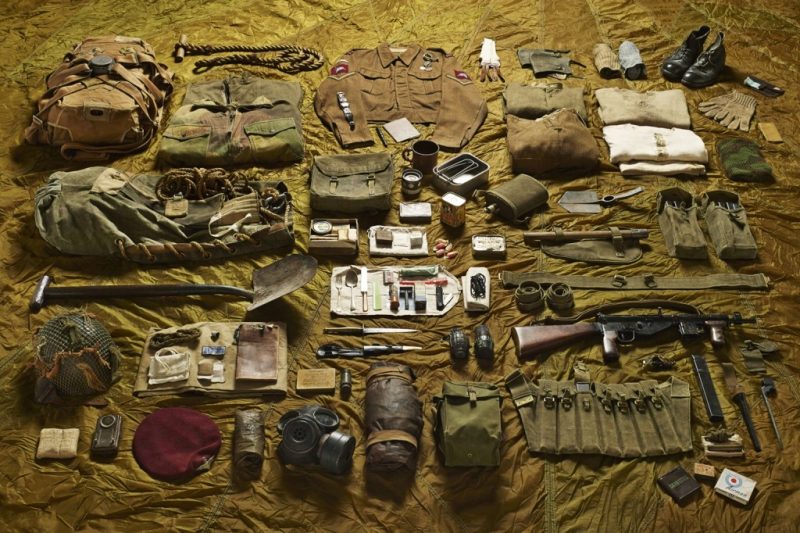
Visit this Thom Atkinson page to see more of his work.
1982 Royal Marine Commando, Falklands conflict
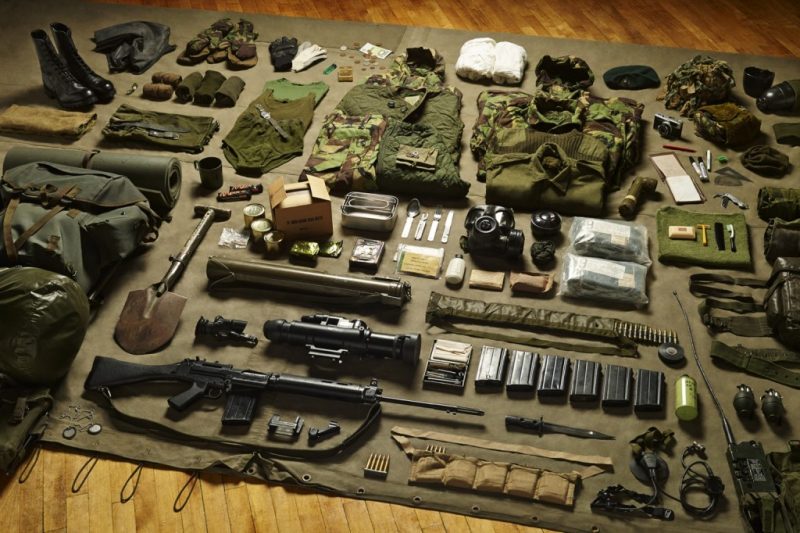
Close Support Sapper, Royal Engineers, Helmand Province, 2014
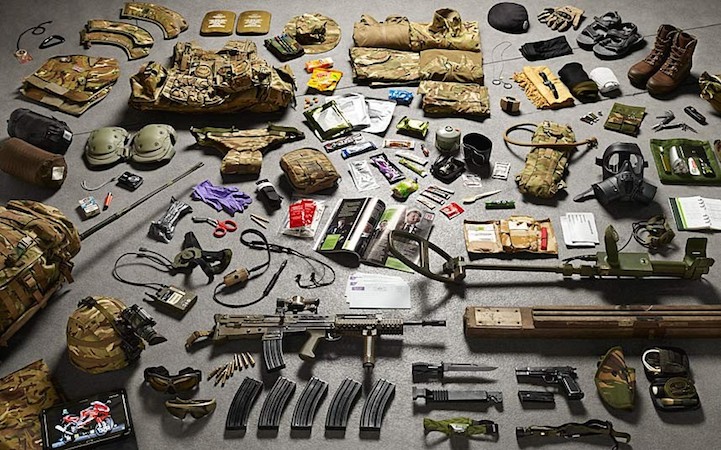
The project shows the exceptional similarities and differences between soldier inventory separated by decades and perfectly captures the evolution of military weapon. Swords became guns, helmets became gas masks. While tools and arms have visibly evolved, the necessities remain the same.“The fact that certain objects recur is more fascinating than the ones that evolve,” said Atkinson, referring to the point that there is a spoon in every soldiers gear.
